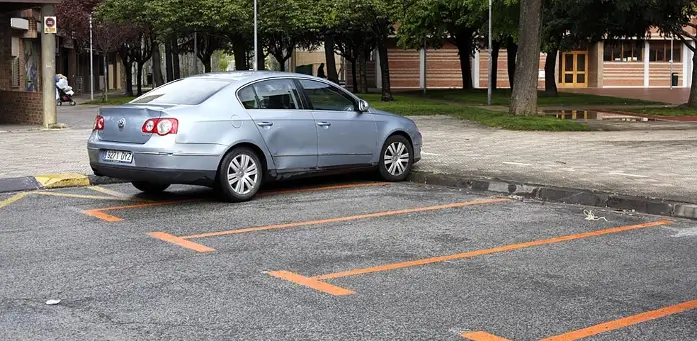Controlling vehicle rotation in the city centres is crucial to encouraging maximum traffic to local shops and businesses. One option to achieve this goal is free limited-time parking. El estacionamiento regulado en la vía pública es una solución con Regulated parking on public roads aims to improve urban mobility and to share parking spaces among as many residents and visitors to the area as possible.
This parking method is ideal for small towns where pay-by-space zoning is too expensive since the income from these parking spaces would not cover the initial investment. In these towns, the answer is to encourage vehicle rotation, attracting more citizens and visitors to the city centre where the shops and businesses are found.
The maximum time allowed in these areas depends on the local authority and the time bands where the zone is operational. Drivers appreciate not having to pay when they visit the town centre, and they can do their business with peace of mind. What’s more, they speed up vehicle rotation, generating trade and wealth in the area.

Source: aparcamentstgn.cat
This type of parking not only favors commercial areas due to the increased influx of people, but also has a positive impact on citizens, since when they travel to the center, they are assured that they will find free spaces and automatically reduce the volume of traffic and badly parked cars that generate stress and chaos.
It is easy to pass a regulation, but how do you make sure that everyone complies with it and does not exceed the maximum time limit?
How does the system works?
When you park in one of these spaces, you declare your arrival time so that parking attendants can keep control. This can be done using a ticket placed inside the car for attendants to read. If you don’t have a time clock, you can write it on a piece of paper and leave it somewhere prominent inside the vehicle. It’s a simple method, but it is also easy to cheat the authorities by claiming you have arrived later than you did.
This is because it is difficult for attendants to monitor all the cars parked at any given time, and there is no way to check that the time stated is correct.

Source: oragruaalicante.es
Urbiotica’s solution for free limited-time parking control
Urbiotica’s solution sends a remote alert whenever a vehicle exceeds the maximum authorised time. It individually detects the arrival time, so attendants only need to act in case of a violation. This releases them from the heavy burden of constant rounds to check vehicles.
How does it works?
- The user parks in a free limited-time space guided by the mobile application, and the U-Spot sensor detects their arrival.
- The app records that they have parked and in where.
- When a user does not report that they have parked or exceeds the maximum time limit, an alert is sent to the attendant.
- This alert is saved until the user is it leaves or until it is managed by the authorities.
- The manager can view and configure all system information using the U-Admin platform.
This solution monitors parking areas and is advantageous for both users and traders.
Drivers can locate free spaces more easily because of the increased vehicle rotation. Speeding up rotation encourages the influx of people, which has a positive impact on local businesses. If shoppers know there will be free places, they are more likely to visit the centre.
What is more, surveillance costs are reduced by avoiding constant patrols for parking attendants. Controllers only need to take action when an alert is generated. If there are no alerts, it means that there have been no violations. Surveillance can also be focused on the most difficult areas, monitoring offenders in real time.
Better parking space availability reduces time spent driving around searching for spaces, which benefits the town, giving it a more attractive, modern image, with less traffic and less congestion. This has a positive impact on citizen quality of life with cleaner air to breathe because of lower emissions from cars searching for spaces. They also benefit from a free and efficient service and real-time information about the availability of parking areas, enabling them to plan their routes before they set off.
There are fewer illegally parked vehicles in no-parking areas, on pavements and pedestrian crossings because it is easier to find a free space. It avoids cars occupying valuable spaces for long periods.
Testimonials from cities that have implemented the system
Vic-en-Bigorre (Francia)
For several years, this type of regulated parking has been operating in the small 32 km2 French town Vic-en-Bigorre with a population of close to 5,500 inhabitants. The town had problems with parking in the city centre because the few parking spaces were monopolised by vehicles parked for long periods of time which often did not move for days.

This was problematic for local shops, with customers avoiding the centre because they knew it would be impossible to park. It was decided to limit the parking to two free hours by installing 114 U-Spot parking sensors accompanied by a complete management system and a mobile application to alert parking attendants of violations.
The project has been a success because vehicle rotation in squares has increased by 33%. Local traders are delighted with the large increase in the influx of customers, stimulating activity in the city centre.
“I am delighted because clients can park very easily. It didn’t use to be this way,” says Régine Grangé, local trader: “the squares used to be full all the time, but now it is much easier”.
Clément Menet, the town’s mayor, says that the lack of parking was a serious problem in the city and you could not park in the centre of Vic. Urbiotica’s solution has been crucial to boosting the city centre. According to Clément:
“Central shops are no longer at a disadvantage now regarding shopping centres.”
To learn more about this project: Vic-en-Bigorre
More information:
Free limited-time control parking
Monitoring of the use ofreserved parking spaces
U-Spot single space detection sensor
…
Would you like to be updated on our news, developments and projects? Subscribe to our Newsletter!